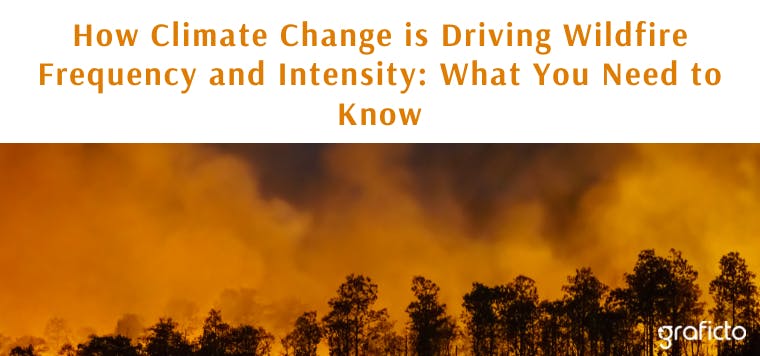Introduction to Climate Change and Wildfire Dynamics
Climate change has become one of the most pressing issues of our time, influencing ecosystems, weather patterns, and natural disasters. Among its many effects, the increasing frequency and intensity of wildfires stand out as a significant concern. Wildfires, natural events essential to some ecosystems, are now occurring at unprecedented rates and scales due to human-induced climate change. This article delves into the intricate relationship between climate change and wildfires, exploring the mechanisms, global trends, and potential solutions.
Historical Perspective: Wildfire Frequency and Intensity Trends
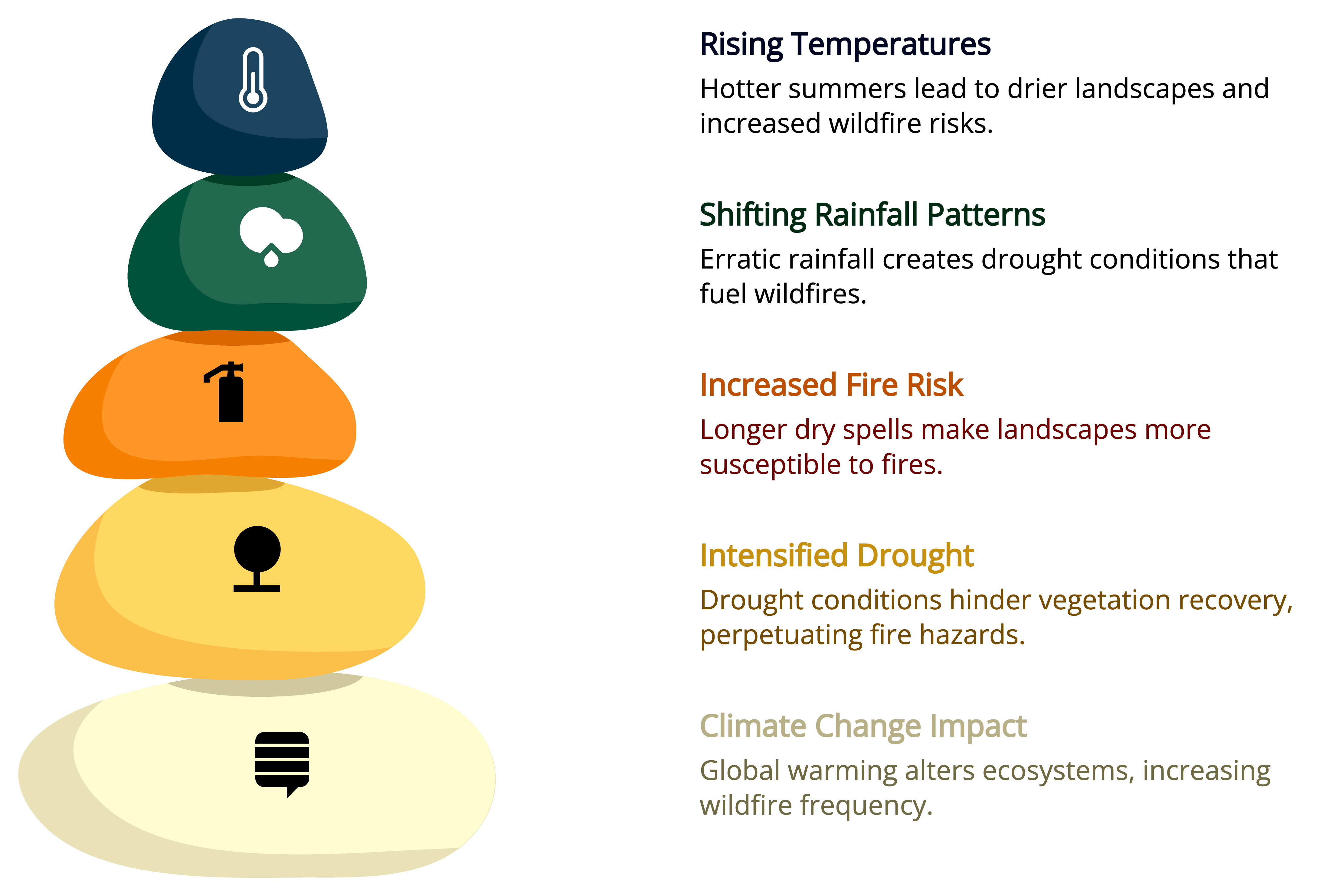
Infographic design using Graficto.com
The frequency and intensity of wildfires have shifted dramatically over the decades. Historically, wildfires were primarily influenced by natural factors such as lightning strikes and spontaneous combustion of dry vegetation. However, human activities, coupled with climate change, have altered these dynamics significantly.
In the past century, global wildfire activity has shown an alarming upward trend. For instance, the annual area burned in the western United States has more than doubled since the 1980s. Researchers attribute this surge to longer fire seasons, drier conditions, and increased availability of fuel due to deforestation and land mismanagement.
Key drivers of these changes include:
- Rising Temperatures: Hotter summers and reduced snowfall contribute to drier landscapes, creating the perfect conditions for fires to ignite and spread.
- Shifting Rainfall Patterns: Erratic rainfall, with longer dry spells, exacerbates the risk of drought and, consequently, wildfires.
Mechanisms: How Climate Change Influences Wildfire Behavior
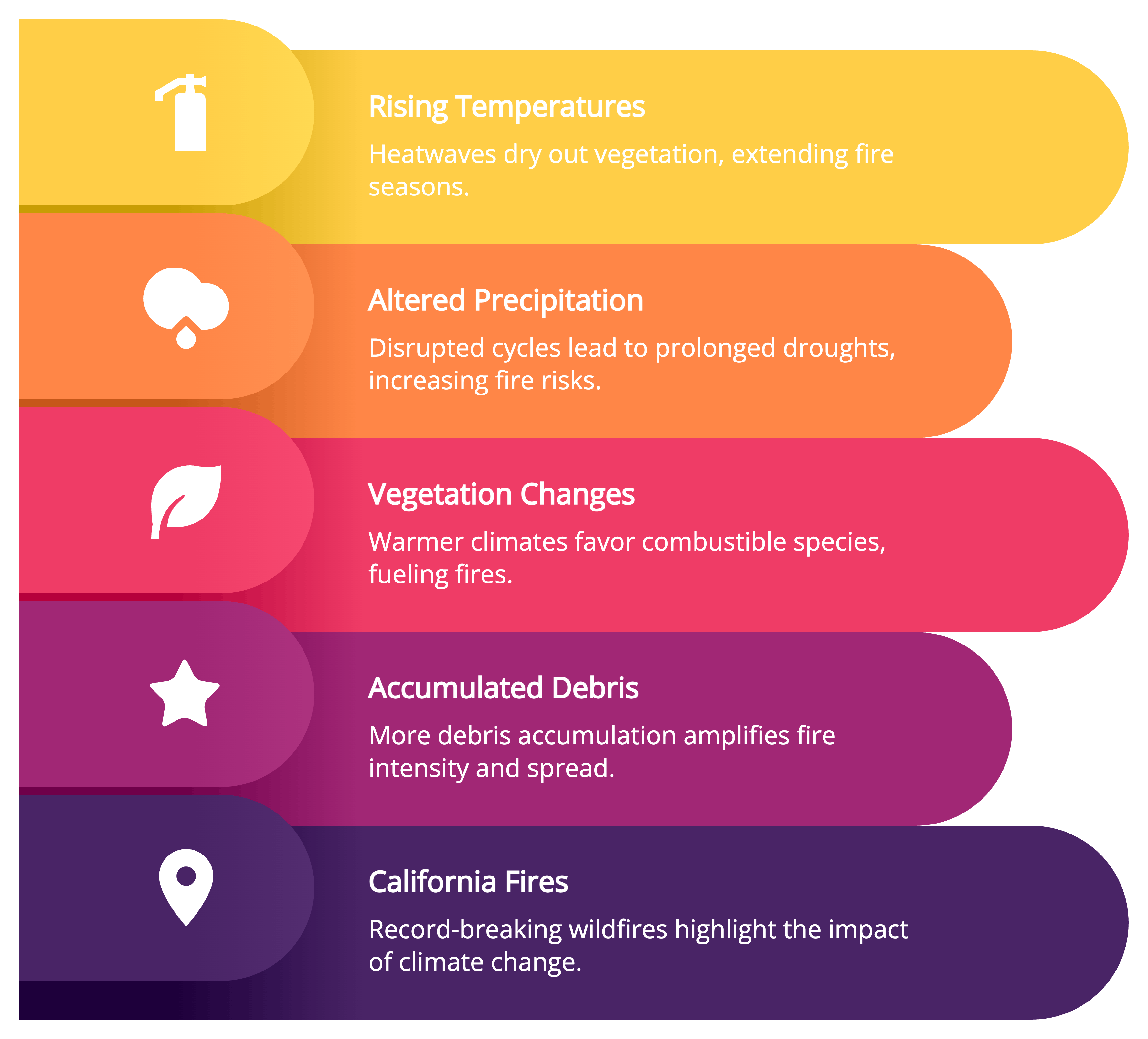
Infographic design using Graficto.com
Increased Temperatures and Heatwaves
Global warming is raising average temperatures, intensifying heatwaves, and extending fire seasons. High temperatures dry out vegetation, making it more flammable. For example, California, a wildfire hotspot, has seen record-breaking temperatures, contributing to some of its most destructive fires.
Altered Precipitation Patterns and Droughts
Climate change disrupts precipitation cycles, leading to prolonged droughts in many regions. Reduced soil moisture and vegetation drying out accelerate fire risks. The "megadrought" in the southwestern United States is a direct result of these altered patterns, intensifying wildfire activity.
Vegetation Changes and Fuel Availability
Warmer climates cause shifts in vegetation types, favoring more combustible species. Additionally, invasive plants often thrive in disturbed ecosystems, increasing the availability of fuel for wildfires. Accumulated debris from dead or decaying vegetation further adds to the intensity of these fires.
Regional Variations: Climate Change Effects on Wildfires Globally
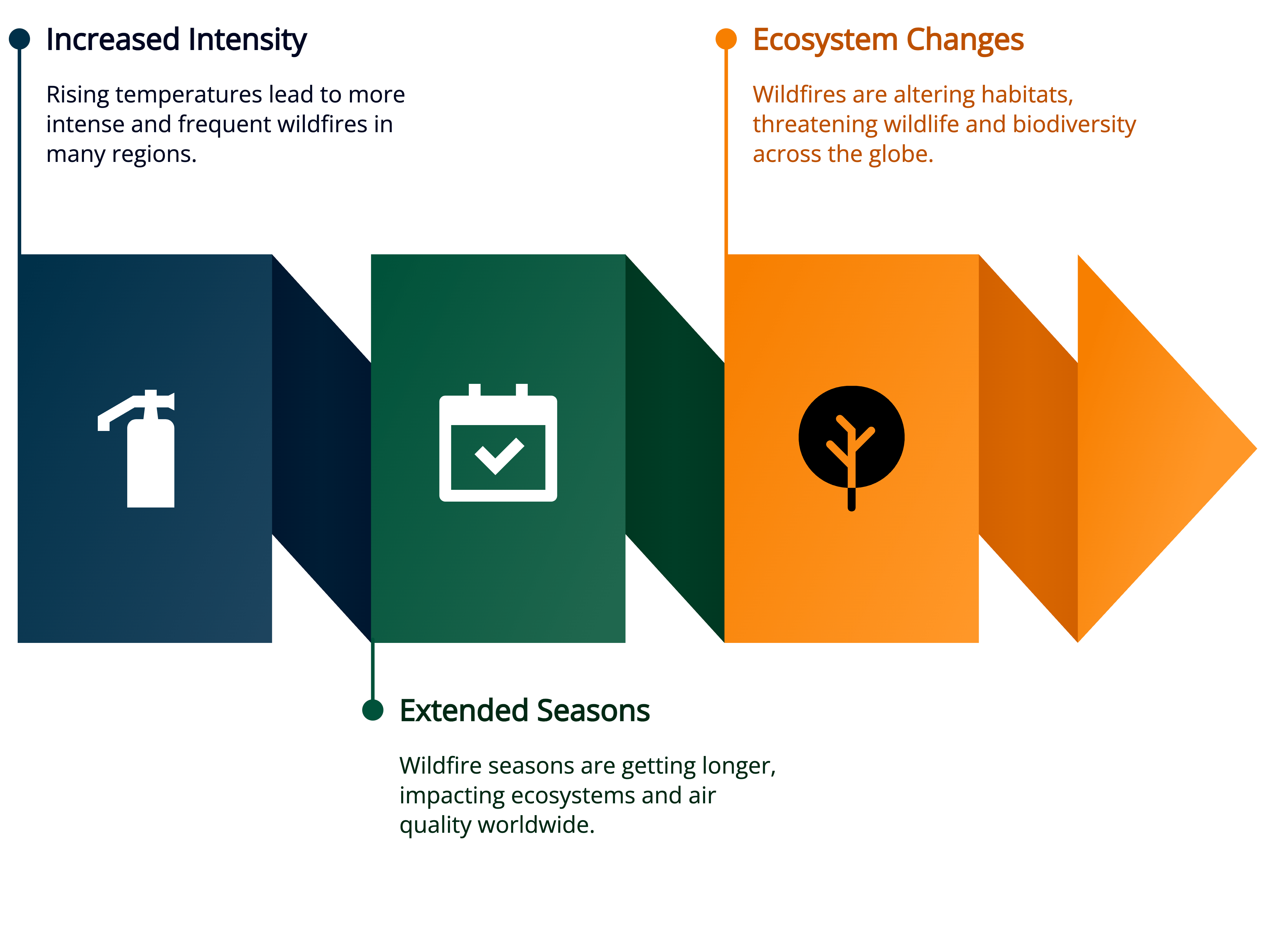
Infographic design using Graficto.com
North America
The United States and Canada are experiencing increasingly severe wildfire seasons. In California alone, wildfires have scorched millions of acres, driven by prolonged droughts and high temperatures. Canada faced its worst wildfire season in 2023, with over 18 million hectares burned.
Australia
Australia’s bushfire crisis, particularly the devastating 2019-2020 season, highlighted how rising temperatures and changing rainfall patterns contribute to intense wildfires. The fires destroyed vast landscapes, killed or displaced billions of animals, and emitted record levels of carbon dioxide.
Mediterranean Regions
Southern Europe and North Africa have also seen a surge in wildfires. Hot, dry summers and strong winds make this region particularly vulnerable. Countries like Greece, Turkey, and Algeria frequently battle catastrophic fires during the summer months.
Implications of Increased Wildfire Activity
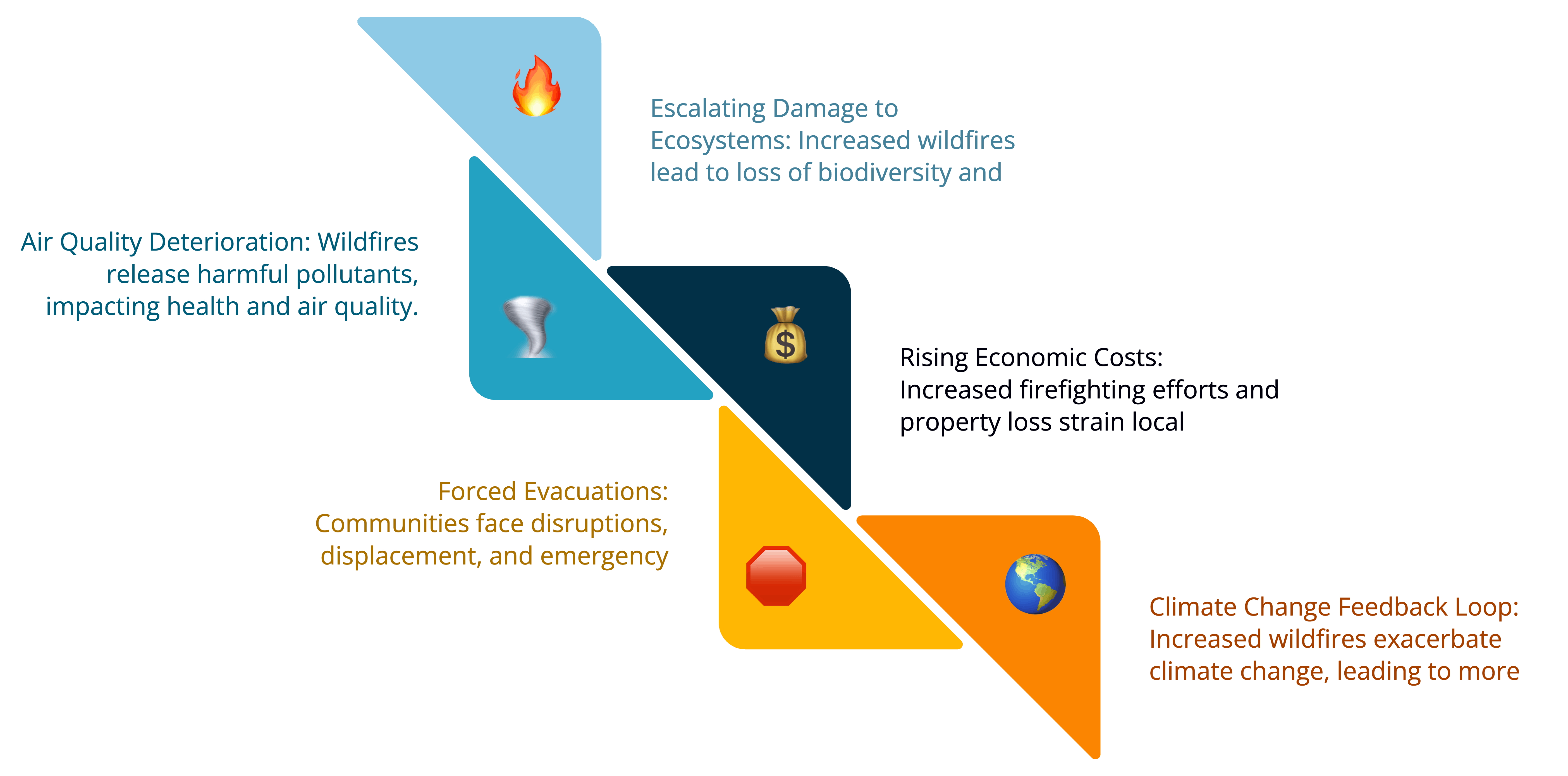
Infographic design using Graficto.com
Environmental Impacts
Wildfires have devastating effects on ecosystems. They destroy habitats, reduce biodiversity, and contribute to soil erosion. Additionally, fires release significant amounts of carbon dioxide, further exacerbating global warming in a dangerous feedback loop.
Human Health and Socioeconomic Effects
The health impacts of wildfires are profound. Smoke from fires contains fine particulate matter (PM2.5), which can lead to respiratory and cardiovascular issues. Economic losses are staggering, with billions of dollars spent annually on firefighting, property damage, and recovery efforts. Entire communities are often displaced, facing long-term challenges in rebuilding their lives.
Future Projections: Wildfire Trends in a Changing Climate
Scientists predict that wildfire activity will continue to increase as global temperatures rise. By 2050, the annual area burned globally could rise by 50-70% under current climate trajectories. Regions not traditionally prone to wildfires, such as the Arctic tundra, are also at risk, highlighting the widespread impacts of a warming world.
Challenges in modeling these trends include accounting for the interplay between climate change, human activities, and natural variability. However, the consensus is clear: without urgent action, wildfires will become even more destructive and frequent.
Mitigation and Adaptation Strategies
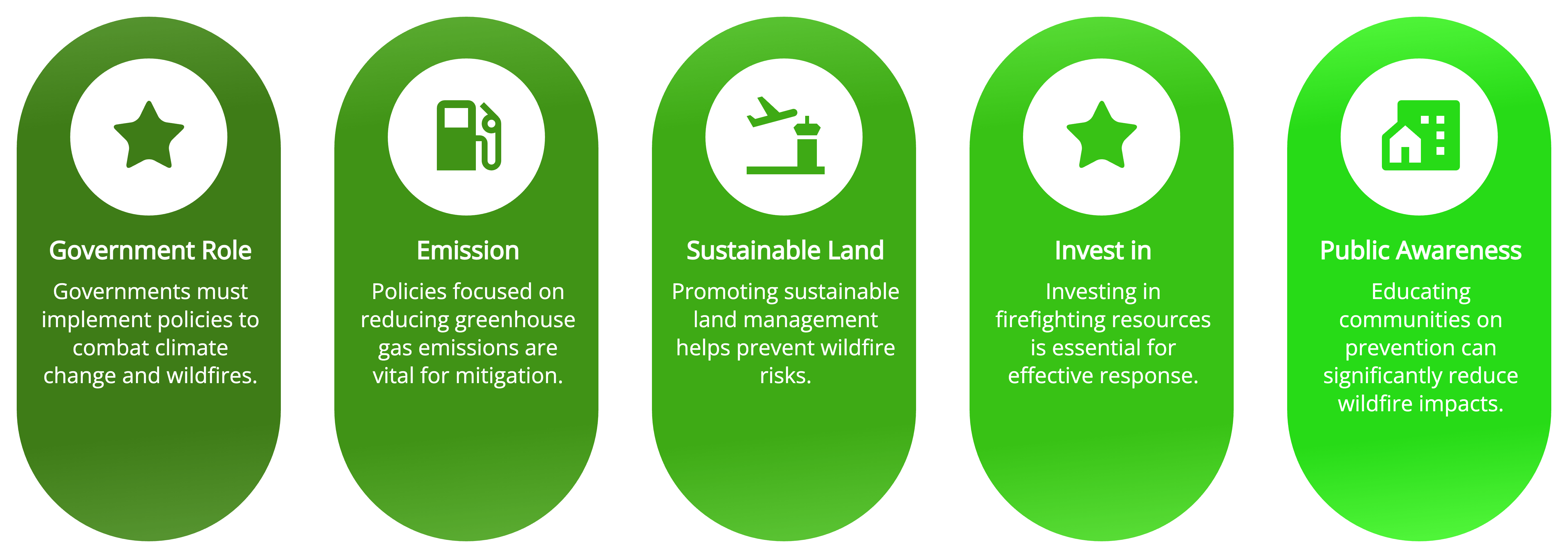
Policy Measures
Governments play a critical role in addressing the climate-wildfire nexus. Policies to reduce greenhouse gas emissions, promote sustainable land management, and invest in firefighting resources are essential. For example, the implementation of controlled burns and the creation of firebreaks can help manage wildfire risks.
Community and Individual Actions
At the local level, communities can reduce wildfire risks by:
- Creating defensible spaces around properties.
- Using fire-resistant building materials.
- Developing and practicing emergency preparedness plans.
Public education campaigns can also raise awareness about responsible behavior, such as avoiding activities that could ignite fires during high-risk periods.
Conclusion: Addressing the Climate-Wildfire Nexus
The relationship between climate change and wildfires is a stark reminder of the urgency of addressing global warming. By understanding the mechanisms driving this crisis, implementing effective policies, and fostering community resilience, we can mitigate the impacts of wildfires. As the world faces an uncertain future, collective action is essential to protect ecosystems, communities, and the planet.
Frequently Asked Questions (FAQs)
How does climate change increase wildfire frequency?
Climate change raises temperatures, prolongs droughts, and alters precipitation patterns, creating ideal conditions for wildfires to ignite and spread.
What regions are most affected by climate-induced wildfires?
Areas like California, Australia, and the Mediterranean are particularly vulnerable due to their hot and dry climates.
Can improved land management reduce wildfire risks?
Yes, strategies like controlled burns, vegetation management, and creating defensible spaces can significantly reduce wildfire risks.
How do wildfires contribute to climate change?
Wildfires release massive amounts of carbon dioxide and other greenhouse gases, which contribute to global warming in a dangerous feedback loop.
What role do human activities play in wildfire occurrences?
Human activities such as deforestation, land mismanagement, and emissions intensify wildfire risks by altering natural ecosystems and contributing to climate change.
